Backpacking in India? Can I do that myself? There comes a day when, tired of seeing so many people doing it and “surviving to tell the tale”, after having seen countless videos of travelers visiting the Taj Mahal, on the steps of Varanasi on the banks of the Ganges, or walking among cows on the beaches of Goa, you seriously consider taking a backpack, setting out on the adventure of taking a trip to India on your own and discovering all these places for yourself.
You want to smell those spices, taste those thalis, listen to a live sittar and even go crazy on the streets full of people, traffic and animals. But since we know that you might need a little push to take the plunge, we have written this guide to India with a lot of information that will make organizing your trip on your own much easier.
Are you up for it now? Then pay attention to everything we have to tell you.
We know that the subject of visas can be somewhat confusing, especially for India, where obtaining one is an essential requirement for entry. In the article on how to obtain an Indian visa step by step (coming soon) you have information on how to apply for one online for up to 5 years.
Luckily for everyone, flying to India is much cheaper than doing so to other Asian countries. Firstly, because it is closer to Europe, and secondly, because it has many international airports, such as Delhi, Bombay or Calcutta, where you can catch a cheap flight.
We leave you an article to find cheap flights to India (coming soon) that will allow you to save a few euros. No waste.
It’s essential to travel to India with comprehensive insurance. We were among the first to offer the popular IATI discount, and you can now get it with Heymondo Travel Insurance as well.
You can find more information about both companies through the links provided above, or you can access the discount directly using the buttons below (in both cases, you’ll see the reduced final price on their website):
While many hotels, guesthouses, and restaurants in India offer free Wi-Fi, some travelers prefer or need a constant connection. We’ve included details on obtaining a eSIM India card with unlimited data (from Holafly) or with fixed data but cheaper (from Saily).
If you want to get it directly, here’s the link (with a discount) for both companies:
The best time to visit India is usually from December to March during the cool, dry season, when most of the country enjoys bright, warm sunshine and rainfall is almost non-existent.
The monsoon dumps rain on much of the country from mid-June to early September, making central and north-eastern India in particular very difficult, with a real risk of flooding. But Rajasthan in the east and Tamil Nadu in the south-west are much drier and very visitable at this time of year.
December through March is typically the dry season. Large swathes of the country are warm and sunny between these months and it rarely rains. However, in the far north of the country, the winter months bring cold temperatures and snow at higher altitudes.
So, when is the best time to travel to India? Considering that India is a large country with a diverse climate, it will depend on the area you travel to.
India’s far northern states have cold winters. Like in most of the rest of India, the monsoon brings heavy rains in July and August. The best time to visit Kashmir and the Himalayas is in autumn, when the monsoon is over but the cold temperatures of winter have not yet set in.
October and November are hot and dry with little rain, and April, May and June are also generally good, so spring is also a good time for trekking through the spectacular mountainous areas of this part of India.
Central India tends to experience hot summers and a very wet monsoon season. During late June, July, August and early September, it rains heavily in this region. Flash floods are not uncommon, national parks are closed, and downpours are prolonged. It is much better to visit other parts of India at this time of year, those which do not get as soaked, such as Rajasthan.
Once the monsoon passes, the weather improves quickly and the long, dry, sunny days of November to March are ideal for visiting this area. April, May and June are also fairly good months, especially if you visit places on the northwest coast, where cool winds keep temperatures down.
The climate of Northeast India is similar to that of Central India. The best months to visit this area are from November to March. At this time of year, days are warm and dry, with hardly a cloud in the sky, perfect weather for sightseeing.
The region experiences heavy monsoon rains from mid-June to mid-September. In the pre-monsoon months, northeast India can be very hot, and the mercury can soar into the 40ºC during the months of April, May and June.
It tends to stay hot at night too, and you are better off heading to the hill stations of India. Places like Darjeeling are cooler and offer near-perfect trekking conditions.
If you are planning a trip to the Taj Mahal, Jaipur or chaotic Delhi, the best time of the year to visit is from November to March. It is the dry season during this period, and the days are warm, dry and sunny, ideal for exploring ancient cities.
The mid-summer months of May and June are very hot in Rajasthan and the Golden Triangle, so be prepared for the heat if you have no other choice. While the monsoon from mid-June to early September dumps large amounts of rain on central and northeastern India, this part of the country escapes with relatively mild showers. You might encounter some rain, but it is infrequent and does not tend to last long.
The best time to visit South India is from December to March. It’s the dry season and you’re guaranteed blazing sunshine and perfect temperatures for lazing on Goa’s beaches. Temperatures start to rise in April, and by late May the humidity can be intense even before the monsoon arrives.
June, July and August are very wet on the west coast of Goa and Kerala; October and November would be the good months.
Please note that the number of passengers using the train every day can make getting a ticket a real odyssey. At stations in major cities there is usually a tourist office where they keep extra tickets, although we advise you to book online (well) in advance to avoid being left without a seat.
We explain how to book a train ticket online without having an Indian mobile number. Don’t worry, because the steps to follow are very easy and you can get started in less than 5 minutes. We will also give you some information about train classes in India, and we will talk about the famous “Waiting list”.
Certain vaccines are recommended depending on the type of trip and the duration of your stay.
The best approach is to schedule an appointment at an international vaccination center well in advance, as waiting lists can be long. There, specialized doctors can advise you, answer all your questions, and provide tailored recommendations. In addition, they will give you essential information on preparing your first aid kit and preventing diseases with basic precautions.
Knowledge is power—once you have all the necessary information, you’ll be able to make the best decision for your trip.
India’s massive capital, the seventh most populous city in the world, with more than 16 million inhabitants, welcomes us in an arduous, complex, exhausting and, at times, painful way. This is Delhi.
A visit here is practically unavoidable, and it’s a place that you have to learn to love. This infinite city offers a lot to the traveler, and in addition to monuments and history, it is like a huge treasure hunt with many obstacles.

With more than 5 centuries of history, we find Old Delhi, where we are greeted by the Red Fort and other historical buildings. New Delhi is currently home to most government offices, as it has been the country’s capital since 1931.
The capital of Ladakh is called Leh, a trading post on the ancient Silk Route. It is located in the north of India, in a valley of the Himalayas not far from peaks of 7000 meters high. The landscape of Ladakh changes gradually as the months go by, but if there is one color that stands out and we cannot forget it is the white of the snow covering every scene.

Popular for its trekking routes, it is a challenge for climbers and a remote point on the map that those who want to know everything about the great subcontinent wish to reach. And, like Sikkim, Ladakh could not be less similar to its neighboring states, since the main attraction here is the Buddhist gompas and stupas.
The name of this town might bring to mind Owen Wilson or Adrien Brody, a train, a bizarre story and India. Okay, I admit it, I did discover this mountain resort by watching The Darjeeling Limited, a film we recommend if you’re about to embark on a trip to India.

Located in the northeast of the country, at an altitude of 2,134 meters and belonging to the state of West Bengal, is Darjeeling, one of our favorite destinations. Surrounded by tea plantations, with spectacular views of the Himalayas and especially of Kanchenjunga, the city reminded us of a border that separates the chaotic, disordered and overpopulated India from the calmer state that we visited during our trip through the country: Sikkim.
It has been part of India since 1975, and to enter this state you still need to obtain a permit. The ancient kingdom of Sikkim is especially different, and perhaps that is why it enchants travelers. The highest peak in India and the third highest in the world is located among its mountains, and, when weather conditions permit, Kanchenjunga can be seen and admired.

From Pelling you can start the Monasteries Route, a hike that we did in three stages as a little training for the Annapurna trek that we were about to start (articles coming soon):
Few cities in the world can be as stressful as Jaipur, but the capital of Rajasthan is worth a visit. In the pink city, we highlight the Hawa Mahal and the Amber Fort, which are a must-see, and the Galta Temple (or the Monkey Temple), for those more daring.

And we cannot stop recommending Kipi’s accommodation, Rajputana guesthouse, one of the best places to stay in India, in a quieter part of the city. You can also take a trip to Ranthambore to see tigers. All this information is in the link above (coming soon), a complete guide to Jaipur to visit this city on your own.
According to Hindu legend (and Wikipedia), it is believed that the gods released a swan with a lotus in its beak and wherever the swan dropped the lotus, the four-headed god Brahma would perform a great yagñá (a sacrificial ritual practiced since Vedic times). The place where the lotus fell was called Pushkar.
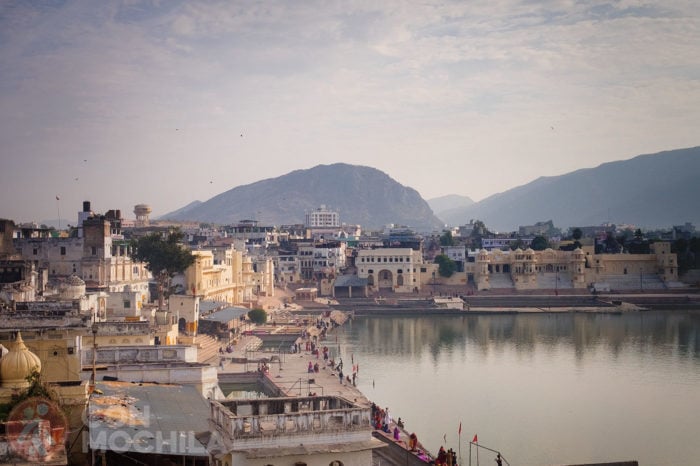
Believe it or not, what’s true is that today, Pushkar is a spiritual city for Hindus. The highlight of this city is its lake, surrounded by 52 ghats, where devotees make their offerings and bathe in its waters.
Some of the dustiest and most desperate cities in Rajasthan could envy this kind of Asian Venice. Udaipur, with its Lake Pichola as its protagonist, is one of the most beautiful and peaceful destinations in the state (in Indian terms, of course).

In Udaipur you can lose yourself in the vibrant labyrinthine streets, enjoy the views from the rooftop of any hotel, stroll among hundreds of colorful shops (one of the best places to buy fabrics) and end the day watching the sunset. Not in vain, it is a resting point for long-distance travelers in India, and we have been captivated by it more than once.
Within the walls of Jaisalmer Fort, sacred and insatiable cows, stubborn vendors and shoe-shiners wander aimlessly. It is no wonder that we ended up purposely lost in its alleys.

Jaisalmer is also the starting point for visiting the Thar Desert, so if you are planning to do the typical camel excursion, we recommend that you first read this article from Faada: Camel rides. It never hurts to get information before doing any activity that involves the use of animals.
The charming Bundi goes unnoticed in Rajasthan, but despite its strong competitors, this one, without great pretensions and with a relaxed offer, manages to surprise the visitor.
We could say that Bundi Palace, Chitrashala and Taragarh Fort are the highlights, but the truth is that the relative peace and walks in the mountains are also a plus.

We could say that Bundi Palace, Chitrashala and Taragarh Fort are the highlights, but the truth is that the relative peace and walks in the mountains are also a plus.
This city near the Thar Desert was the first place we visited in India on our first visit to the country. The ancient city of Bikaner, surrounded by a 7 km long wall, is a maze of streets, markets and havelis where dozens of cows are always wandering around.

Although it may seem a bit sterile at first, in Bikaner you can spend a couple of days visiting the spice market, the Bhandasar Jain Temple in Bikaner, or taking a trip to the Karni Mata Temple, better known as the Temple of Rats (sacred, but not suitable for people with a phobia of these little animals, of course).
Perched on a hill, the Mehrangarh Fort watches over Jodhpur. From the ramparts of this fort, one of the most impressive in Rajasthan, you can see the Umaid Bhawan Palace, converted into a luxury hotel, and the Jaswant Thada mausoleum.

Chaos reigns on the city streets while the sun shines, because walking through its labyrinthine alleys means jumping over stalls, dodging frenetic rickshaws, suffering for the stray dogs, and asking permission from the scrawny cows to pass.
People from all over the world come to the Taj Mahal every day to try to get the best photo of this wonder from almost any perspective. Good proof of this are the photos that our readers send to tell us: “Hey, I was there too.”

The town of Agra doesn’t really offer much more, although it is well worth climbing up to one of the hundreds of ramshackle terraces and taking in the views of the Taj Mahal’s dome while the daylight allows it.
It is also a good idea to take a walk through the Taj Ganj, where the chanting of prayers wakes you up and reminds you every few hours that you are in a Muslim neighborhood.
Life and death walk in unison on the banks of the Ganges in Varanasi. The cremations are perhaps the most shocking thing about this sacred city, but the survival in the streets and ghats next to the polluted water of the river, where people bathe and participate in ceremonies, is even more impressive.

It is unforgivable not to sit and enjoy watching a Ganga Aarti at Dasaswamedh Ghat, and of course you have to let yourself go with the flow of humanity and get lost in the smell of incense and the music of the sitar.
Few people visit Mathura, perhaps because of its proximity to Vrindavan, where the first Hare Krishna gurukula opened back in 1976, but it is a shame because most people do not know that it is one of the seven sacred pilgrimage cities for Hindus that make up Sapta Puri.

This fact makes Mathura a sweet treat for those who escape the masses of tourists and want to feel the authentic India side by side, like when you watch the daily pujas, both in the morning and in the afternoon, in front of the sacred Yamuna River. For 100rs you can have a boat for you and your companion to watch the puja and take a ride along the ghats.
Orchha is a popular holiday destination for Indians that is somewhat overlooked by the rest of humanity. This small town situated on the Betwa River is an opportunity to escape from the places more frequented by Western travelers.
Its small size means that one day is enough to see the highlights, although you can always spend more time there if you want to rest.

In this medieval-looking destination you can visit a couple of castles, the Jehangir Mahal and the Raj Mahal, and a Hindu temple known as Ram Raja. If you feel like pedaling, you can also rent a bicycle and visit the Orchha nature park.
Khajuraho, yoga and Kama Sutra, that’s how we summarize our time in this clean city, which, despite all the dirty things that can come to mind, remains spotless..
Its Hindu temples, a World Heritage Site, have become world famous for the erotic sculptures carved into their walls, which are said to have been created to educate lovers and which today leave no one indifferent.

Divided into several groups, the visit to the temples can take up a whole day, especially if you decide to do it at a leisurely pace and by bike, so we recommend staying a couple of nights. Halfway between Agra and Varanasi, this destination is a good place to stop along the way, which in India is long…
Ujjain, another of the sacred cities that make up Sapta Puri and one of the four cities where the Kumbha Mela is held every 12 years. This small and quiet city is perfect for spending a few days without seeing a single tourist (proof of this are the faces of astonishment when you walk down the street or enter any restaurant) and enjoying the pujas at dawn and dusk in front of the sacred Kshipra River.

Forget the crowds that you’ll find in Varanasi along the Ganges. In Ujjain you can easily get to the front row and then chat with the Brahmins performing the puja, eager to see what a foreigner is doing in those parts.
Sabarmati Ashram, founded in Ahmedabad in 1917, is the first ashram that Gandhi founded after his return from South Africa. It owes its name to the river that runs alongside it and was created with a dual purpose: to serve as an institution that carries out the search for truth and at the same time as a platform to gather workers committed to non-violence, which was intended to help liberate India.

Today it is a museum and a meeting point for all those who want to see first-hand ( video ) the place where Gandhi lived and from where he would carry out the famous salt march to achieve India’s independence from the British Empire.
And at the southern tip of the Gujarat peninsula lies Diu, a small fishing village with a Portuguese colonial past. In its streets one stumbles upon small Hindu temples and ancient churches, and its fort is a must-see.
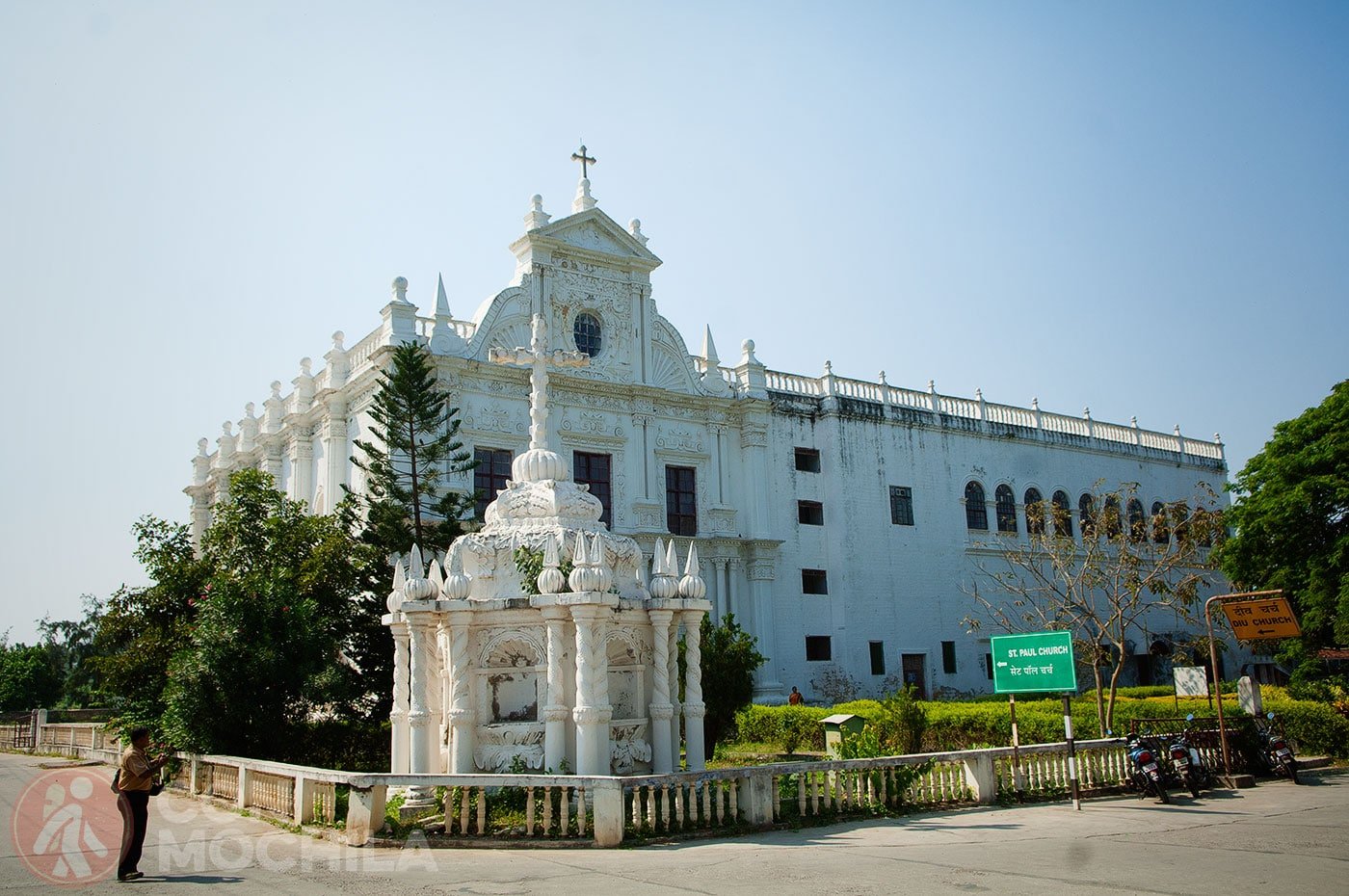
There is little else to do, apart from strolling along one of its beaches, and although it is not a typical coastal destination and the beaches are not spectacular, at least the remoteness of the place keeps mass tourism away and avoids the stress of crowds.
The “Benares of South India” is one of the sacred places where the Kumbh Mela festival is celebrated, one of the largest human pilgrimages that takes place every 12 years. Among the charms of this small town is the Ganga Ghat, on the banks of the sacred river Godavari and surrounded by numerous temples.

However, we were attracted by less divine motives, because Nashik is also the capital of wine, the destination that appears on the map when it comes to wine tasting.
Bombay is the most populated city in India (and the fifth in the world) and can be stifling for the first-time traveler. Although you can spend hours walking through its streets of colonial buildings, its parks and beaches where Indians play sports and eat ice cream were not very attractive to us and we have little to tell you about them.
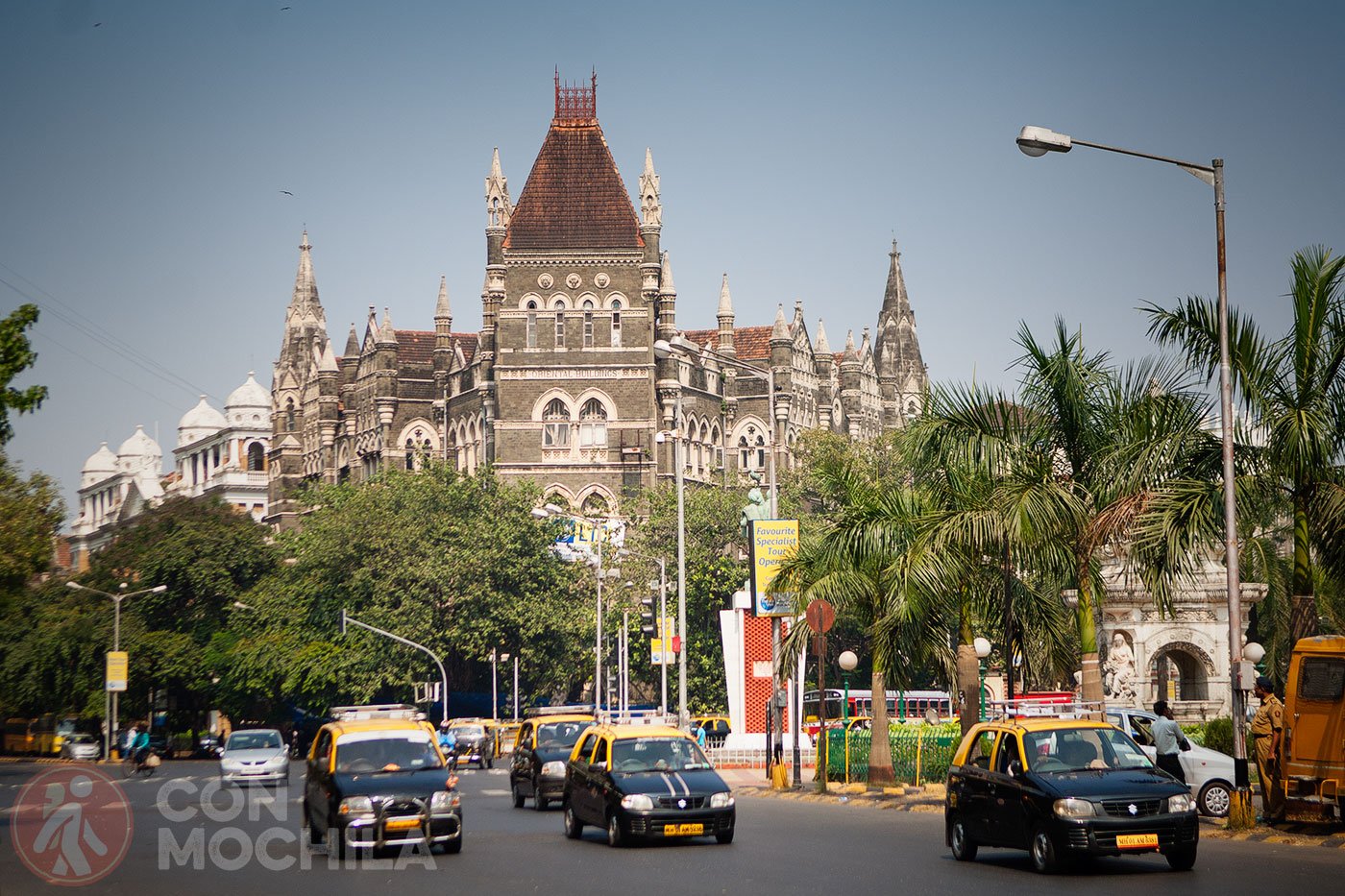
However, if it is on your way you can stop and do a bit of sightseeing: see the Gateway of India, visit a museum, visit the Chhatrapati Shivaji Station, or even cross over to Elephanta Island and see its caves.
The Ellora Caves are reason enough to travel to Aurangabad: no less than 34 rock-cut temples. Ellora was an important historical trading center in the Deccan region, situated on an ancient trade route in South Asia, and the caves served as monasteries for monks, temples for prayers and a place of rest for pilgrims.
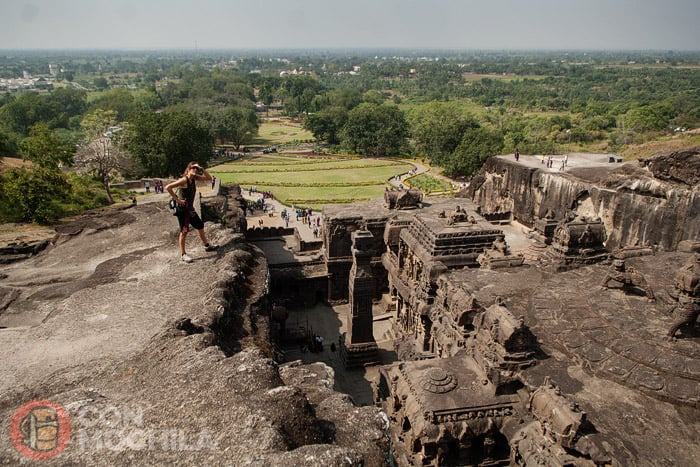
In addition, in the same area are the Ajanta Caves, 29 artificial caves that are World Heritage Sites.
If you’re traveling along the west coast from north to south or vice versa, you’ll likely decide to stop somewhere between Mumbai and Goa. The city of Kolhapur in southern Maharashtra is a good choice, with plenty of accommodation and things to see and do to keep you entertained for a day.

The Mahalaxmi Temple, dedicated to Amba Bai, is a place of pilgrimage, but you may prefer to take a boat ride on Rankala Lake, visit the ancient palace where the former ruler Chatrapati lived, or travel 20 km to the Panhala Fort.
The second largest city in the state of Karnataka is Mysore, whose popular Royal Palace, the residence of the Maharaja of the Wodeyar dynasty, attracts thousands of tourists. It is easy to find groups of hundreds of schoolchildren on an excursion in the complex, so be prepared to be the center of attention and to be asked for photos… Young Indians love photos with foreigners.
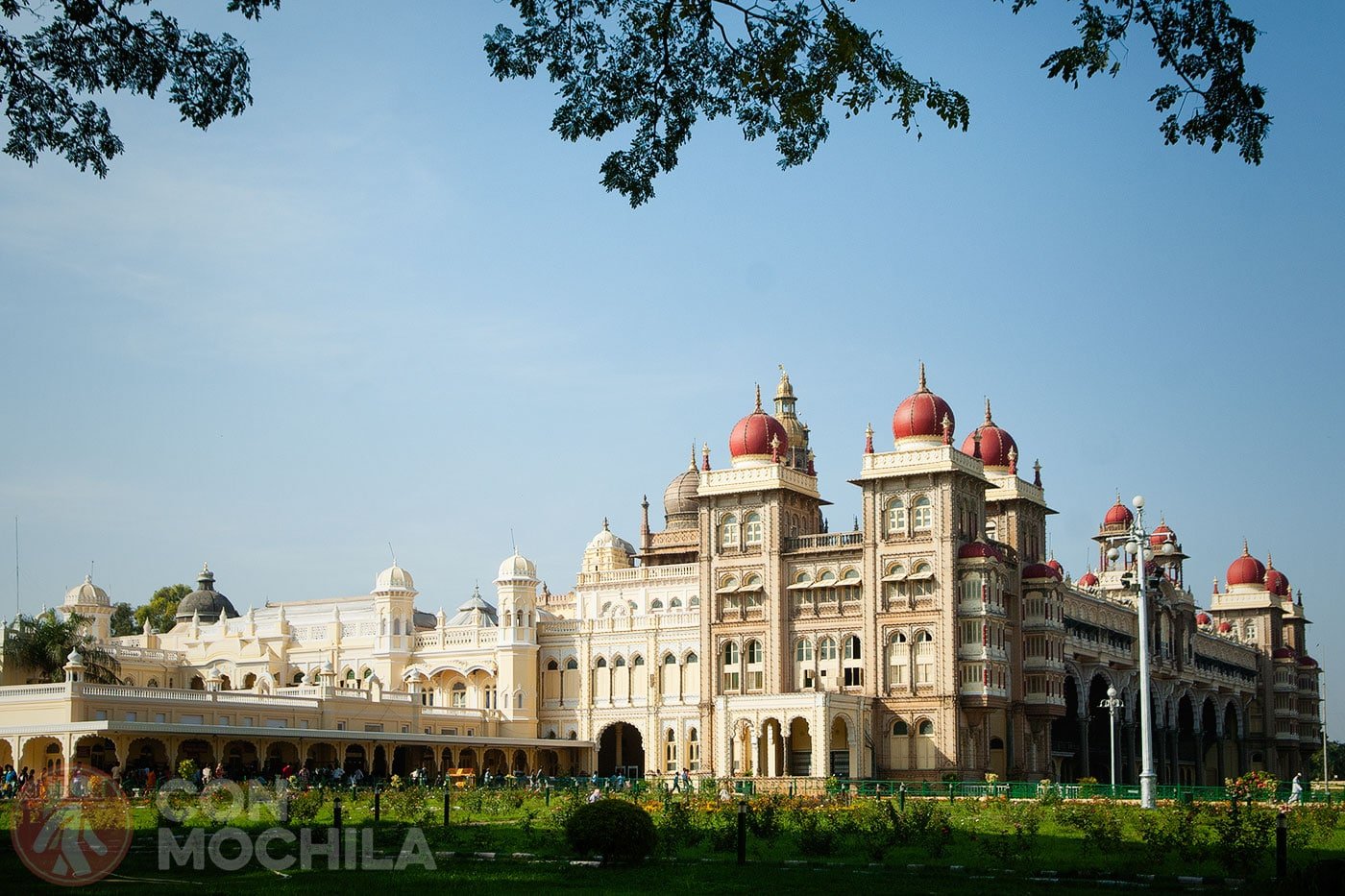
If you are spending more time in this city, take a stroll through the Brindavan Gardens, the Chamundi Hills or the bazaar. Mysore is also home to several Ashtanga yoga schools that attract a very specific public.
The ruins of the ancient capital of Vijayanagar spread over 26 square kilometers and renting a bike or motorbike in Hampi to discover them is one of the most magical things to do in India. The extraordinary landscape, described as Martian by many travelers, is the result of volcanic activity millions of years ago: wherever you look you will see huge eroded stones.
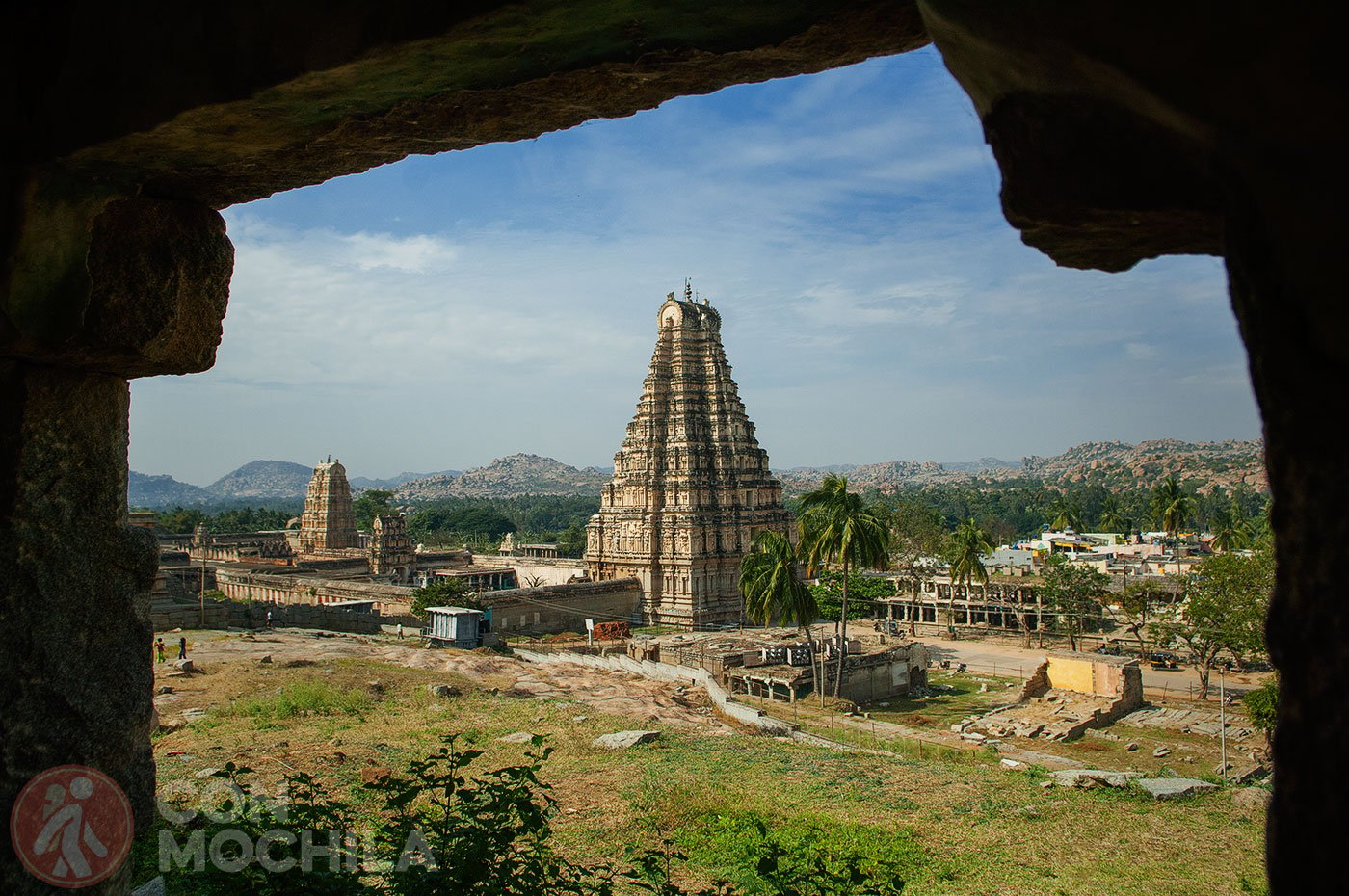
One of the best views is from the top of Anjanadri Hill, where the Hanuman Temple is located. And one of the most visited temples is the Virupaksha, dedicated to Shiva and a World Heritage Site.
The enormous Bangalore is the capital of the state of Karnataka and the third largest city in India; and occupying that location means that it is very well connected to the rest of the country. Lacking in exoticism, the cosmopolitan city is dominated by buildings and some gardens remain from what was once the great lung of the area, such as the Lal Bagh Botanical Gardens or Cubbon Park.
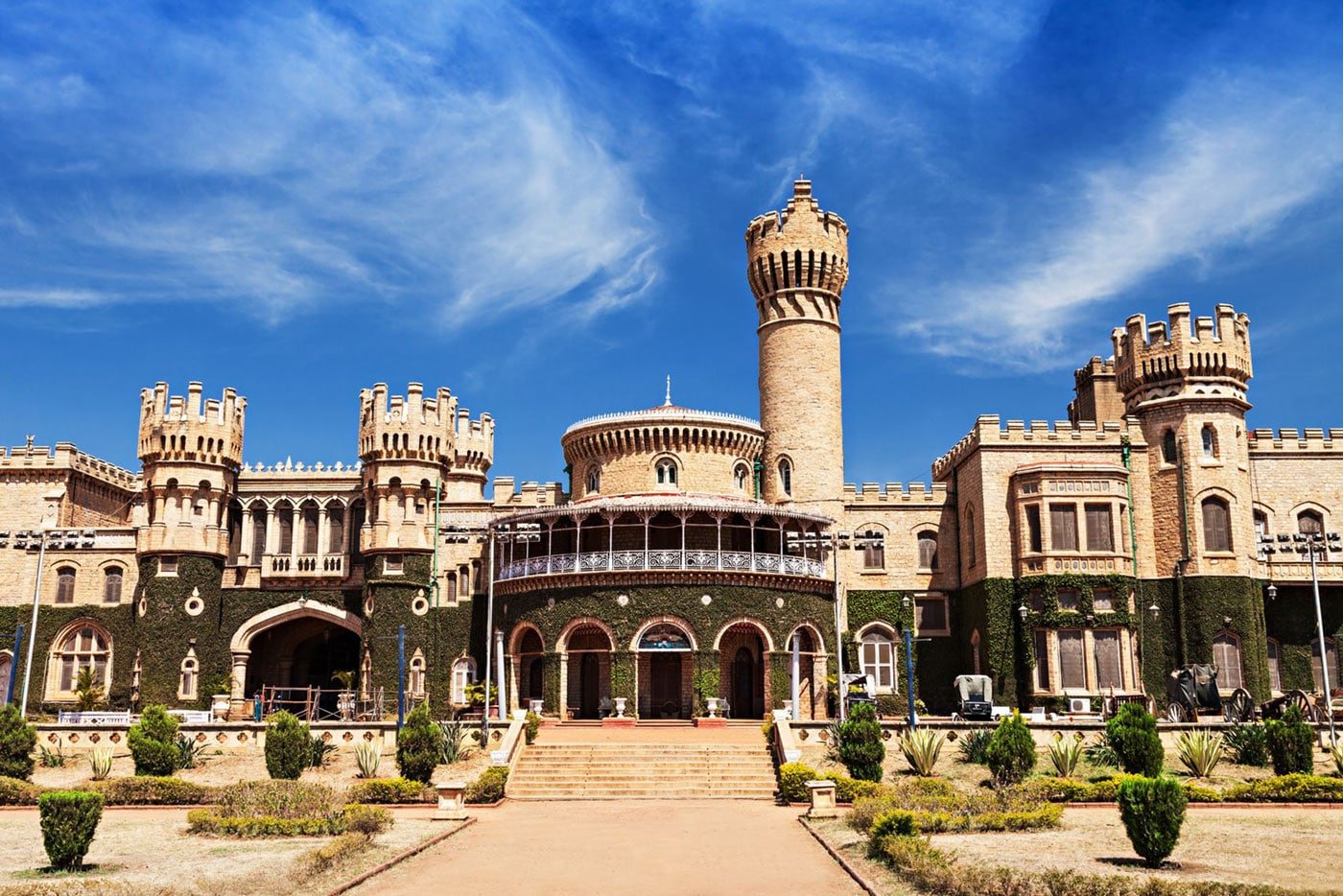
But as in any Indian city, no matter how modern it may be, there is no shortage of temples, and some of them are Shiv Mandir, the Bull Temple (famous for the statue of a bull carved into a rock), the Shivoham Shiva Temple or the Maha Bodhi Society Temple.
A trip to South India should definitely include a visit to the Kerala backwaters, an extensive network of rivers and canals as an efficient means of transport and way of life with a starting point in Alleppey (or Alappuzha).
There are several options for navigating the waters of this 900-km labyrinth, from small boats with capacity for just a few people moved by sinewy rowers, to enormous vessels for taking a short cruise.
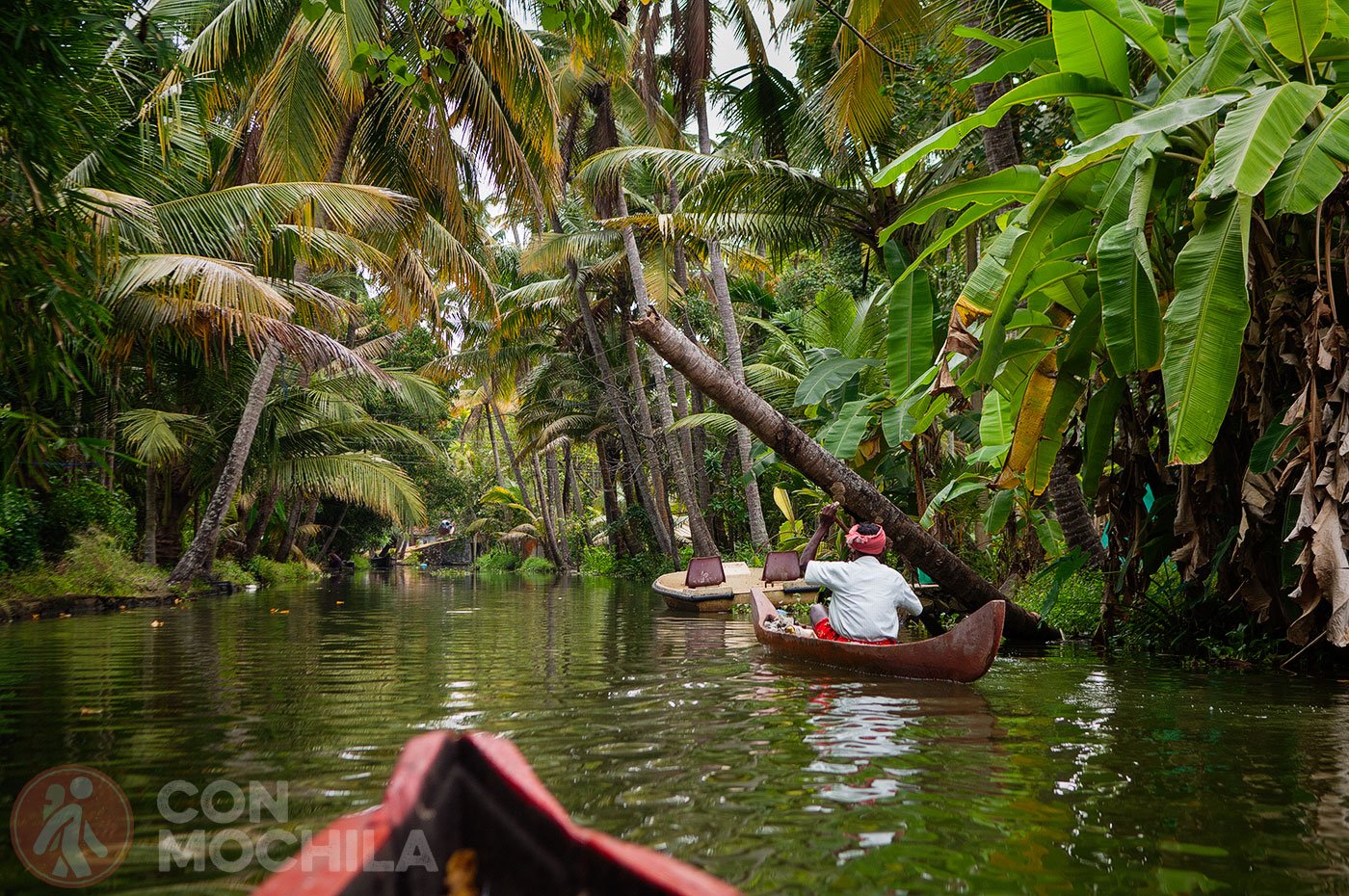
These large boats are called Kettuvallam and, although they were once used to transport goods, when they became obsolete due to the greater speed of road transport, the owners adapted to the circumstances and transformed them into houseboats.
If there is something that characterizes and gives personality to Varkala beach, it is undoubtedly the cliff that you have to descend to reach Papanasam beach, whose waters are said to cleanse the soul of sin. The famous “cliff”, which looks out over the Arabian Sea, is a precipice not suitable for people with vertigo and on whose broken steps shit accumulates day after day.
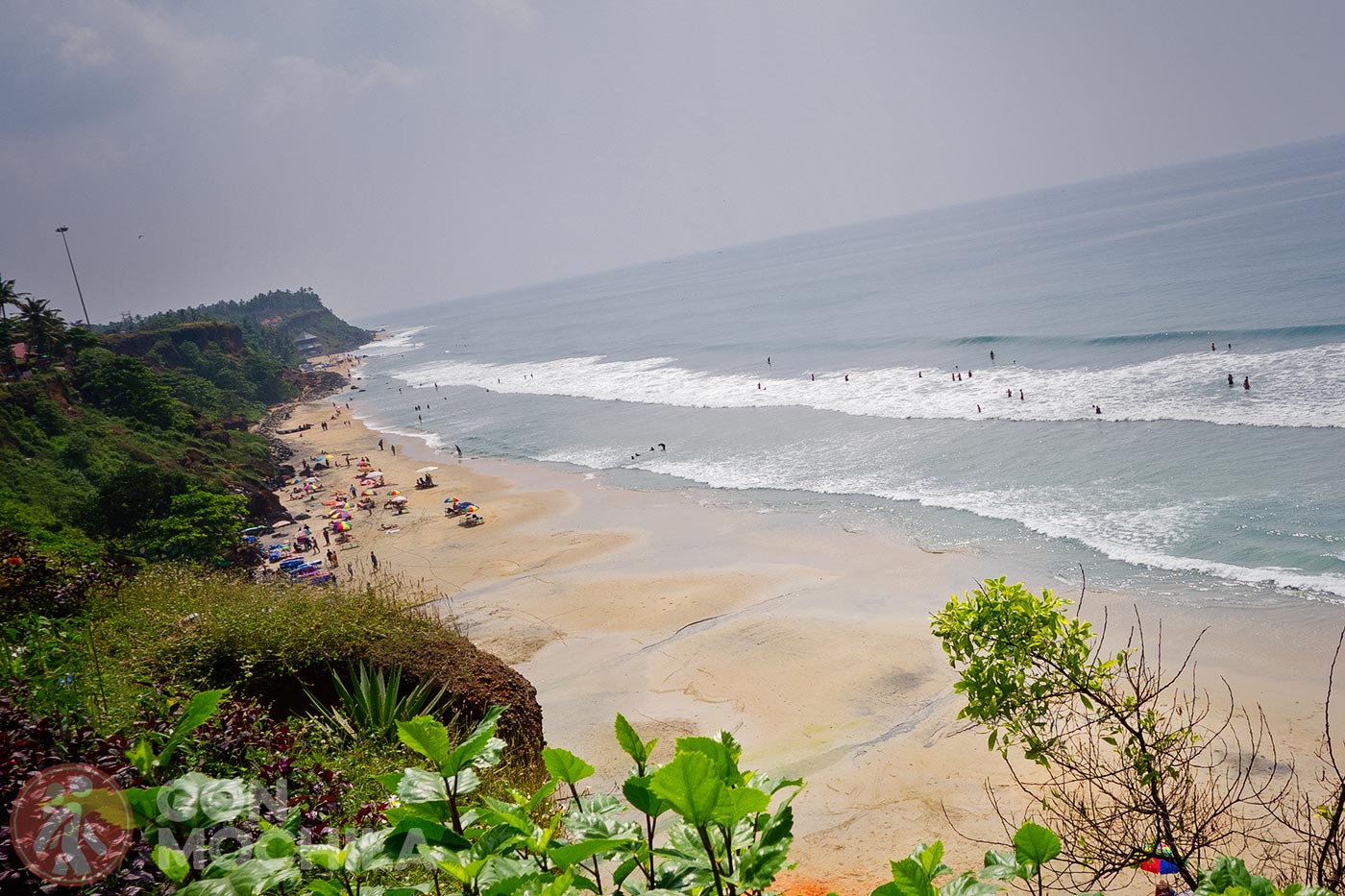
Despite the crowds at certain times, renting a body board for a while for a few rupees is great fun, as the waves are big and long enough to make you “surf” for a few seconds, but be careful of the strong currents that can drag away a careless or overconfident bather.
If you are suffering from the heat and fancy a change of scenery, Ooty and Munnar are two hill stations in southern India where you can breathe fresh air. Although they are located quite close to each other, they belong to different states, the former belongs to Tamil Nadu and the latter to Kerala.
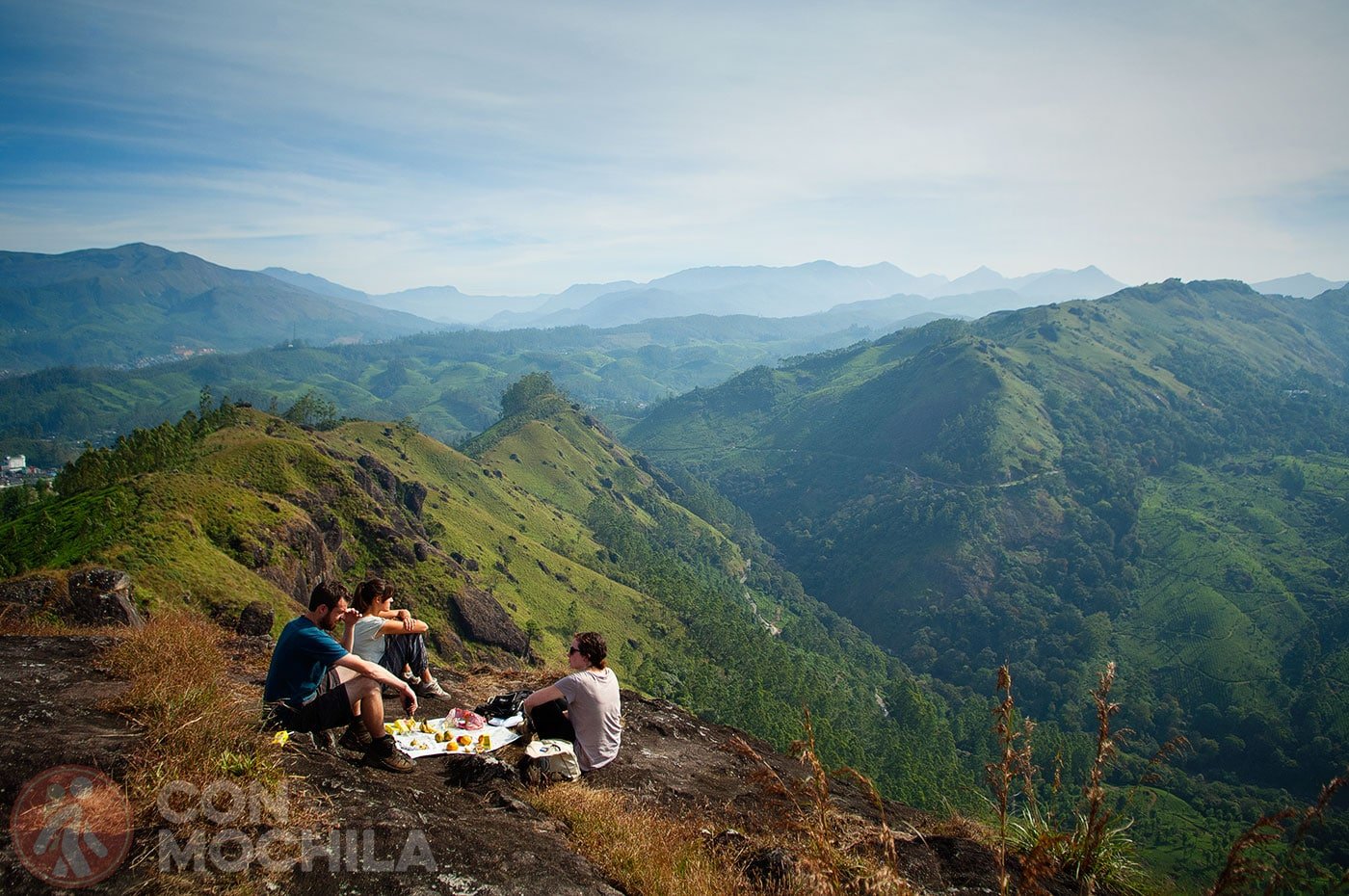
The most popular option in these destinations is to go on an excursion and visit the tea, coffee and spice plantations, a very peaceful type of rural tourism. The coolness that is appreciated during the day turns cold at night, forcing you to dust off that sweatshirt that you keep in your backpack and that you thought you were not going to use.
We toured the east coast of India after spending a month in Sri Lanka driving our own tuk-tuk and the first stop was Mamallapuram, a coastal town on the Bay of Bengal in the state of Tamil Nadu. The popularity of this destination, which is evident from the number of accommodations and shops for tourists, is due to a set of sculptures and temples carved into the rock.
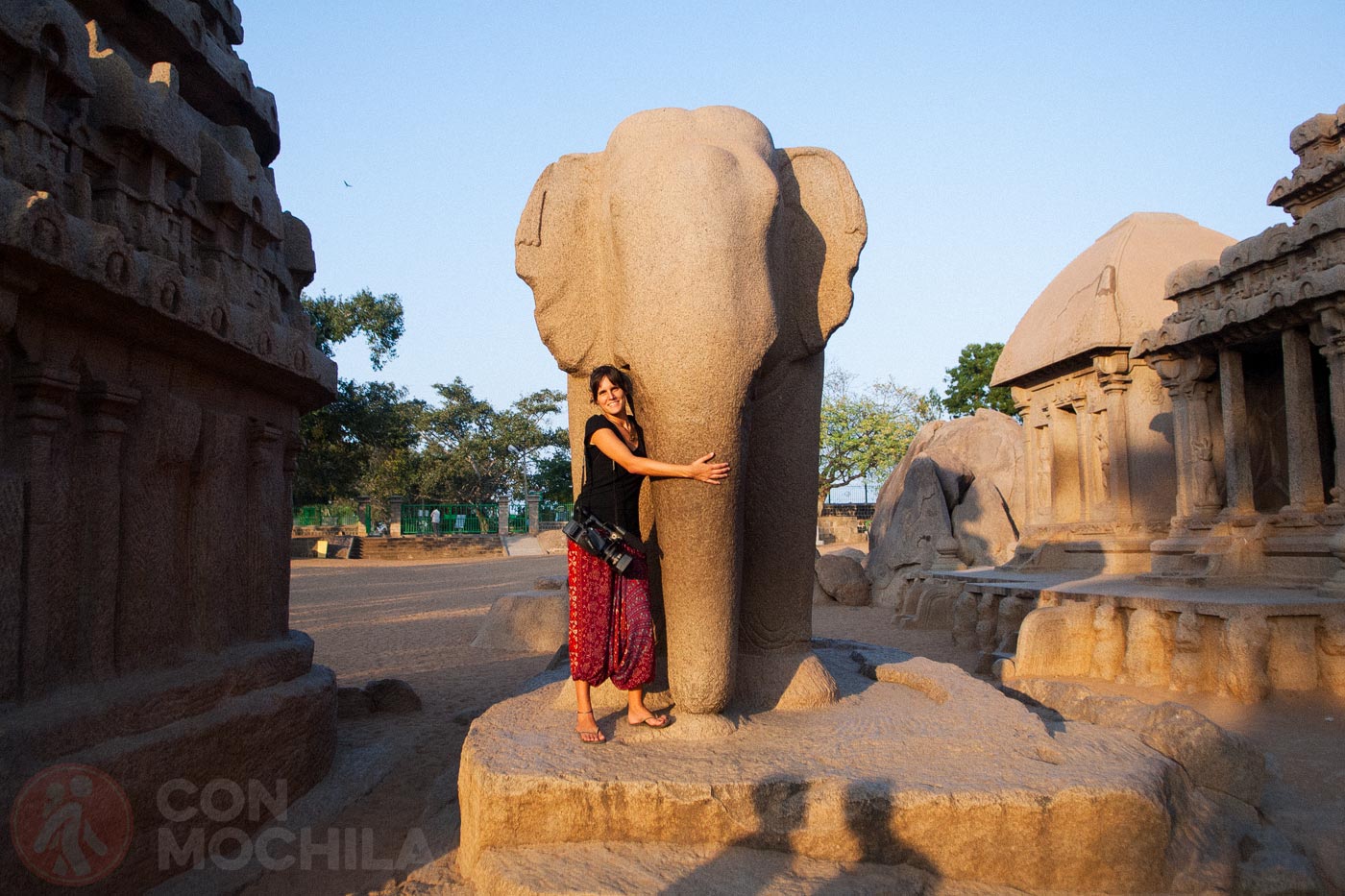
Five Rathas and the shore temple are perhaps the most impressive, but Arjuna’s Penance and Krishna’s huge butterball are also worth seeing. A whole city of stone.
At the southern tip of the country, what we call “the tip of India”, lies Kanyakumari, a strange place that brings together a very diverse group of people from all corners of the subcontinent.
The curious thing about this town is that it is the meeting point of the waters of the Bay of Bengal, the Arabian Sea and the Indian Ocean and from the coast you can see both the sunrise and the sunset, the moment when the crowd fills the beach and bids farewell to the day with applause.
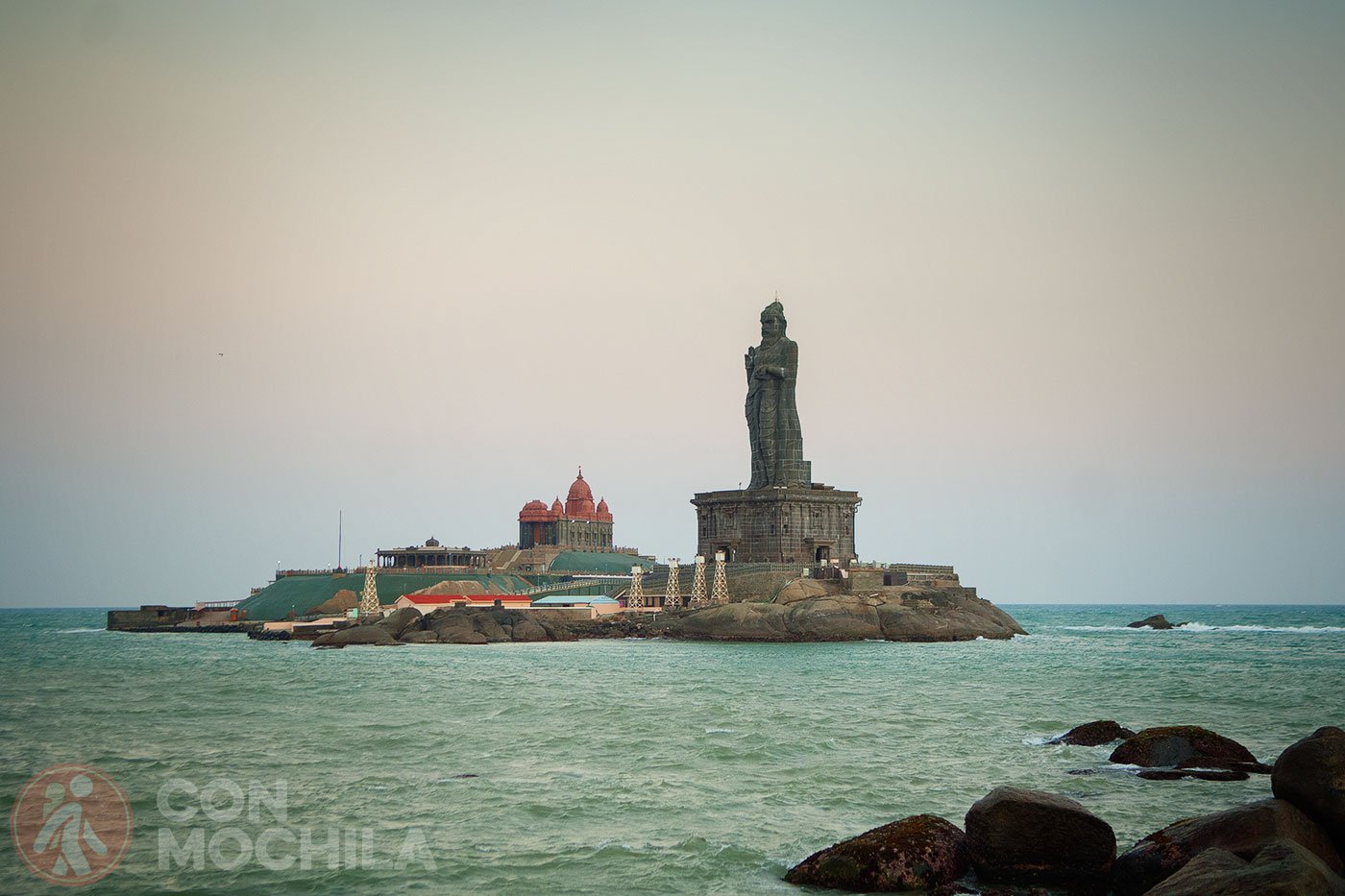
What could be better than our arrival at the end of India? A motorbike ride from Varkala to Kanyakumari on a Royal Enfield. (coming soon)
Chennai is another one of those transit cities that, without being too special, ends up being a stop for many travelers, especially those who fly to Sri Lanka. The chaos and dirtiness of this city is evident in each and every one of its streets, however, the good food can even make you forget the bad temper that can come with such disorder.
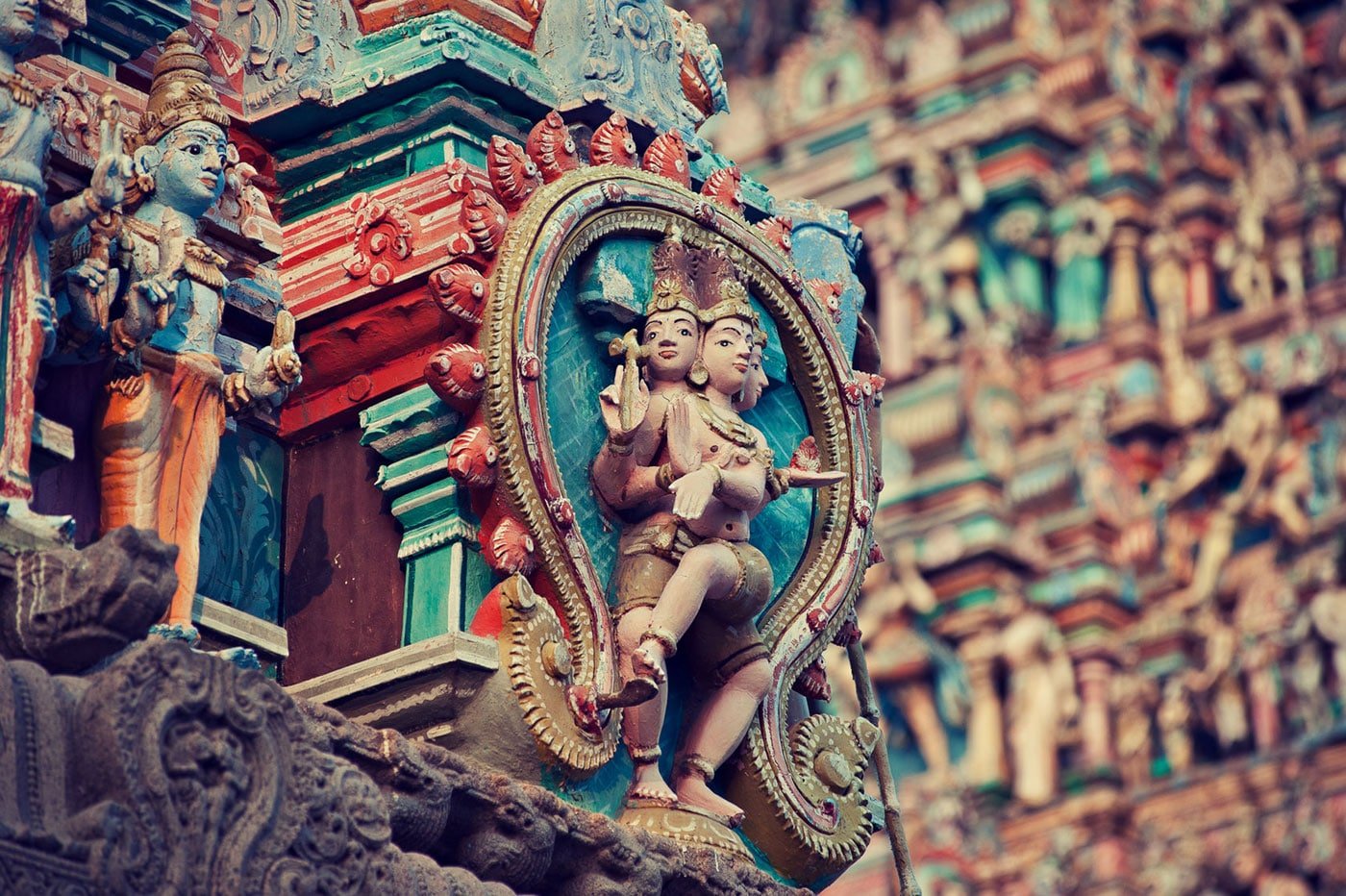
At least the authenticity of the Broadlands Lodgings House hotel, where we felt like we were starring in The Best Exotic Marigold Hotel, made us fondly remember this peculiar stop on the route.
The poverty of Calcutta is frightening and shocking. In its most dilapidated streets, people live in improvised houses with canvas roofs, and the work of Mother Teresa and her fame have made the city always associated with misery and illness.
The capital of West Bengal is a place that shakes the traveler but is also full of contrasts, as it is home to many students and has never ceased to be a meeting point for artists, intellectuals, writers and people from the world of the arts.
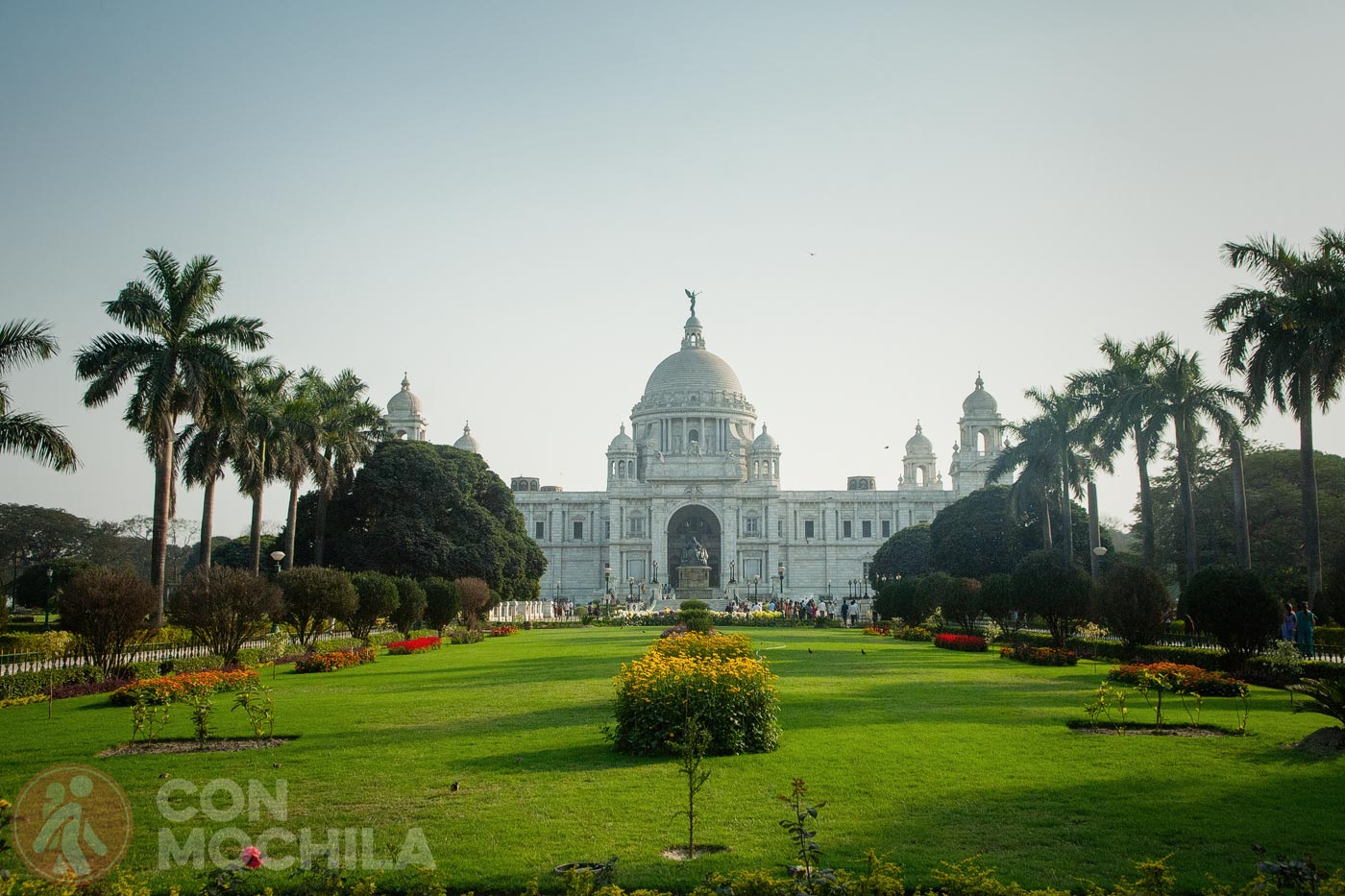
Apart from seeing Mother Teresa’s house museum, another interesting visit is the Victoria Memorial, a building in honor of the Queen of England. For lunch, you can’t miss the Indian Coffee House, the old bohemian café in Calcutta.
On the east coast, Bhubaneshwar is worth mentioning. It is the capital of Orissa and the site of the Lingaraj temple, dedicated to Tribhuvaneswar. However, non-Hindus are not allowed inside the walls that surround it, and have to settle for seeing it from the top of a platform
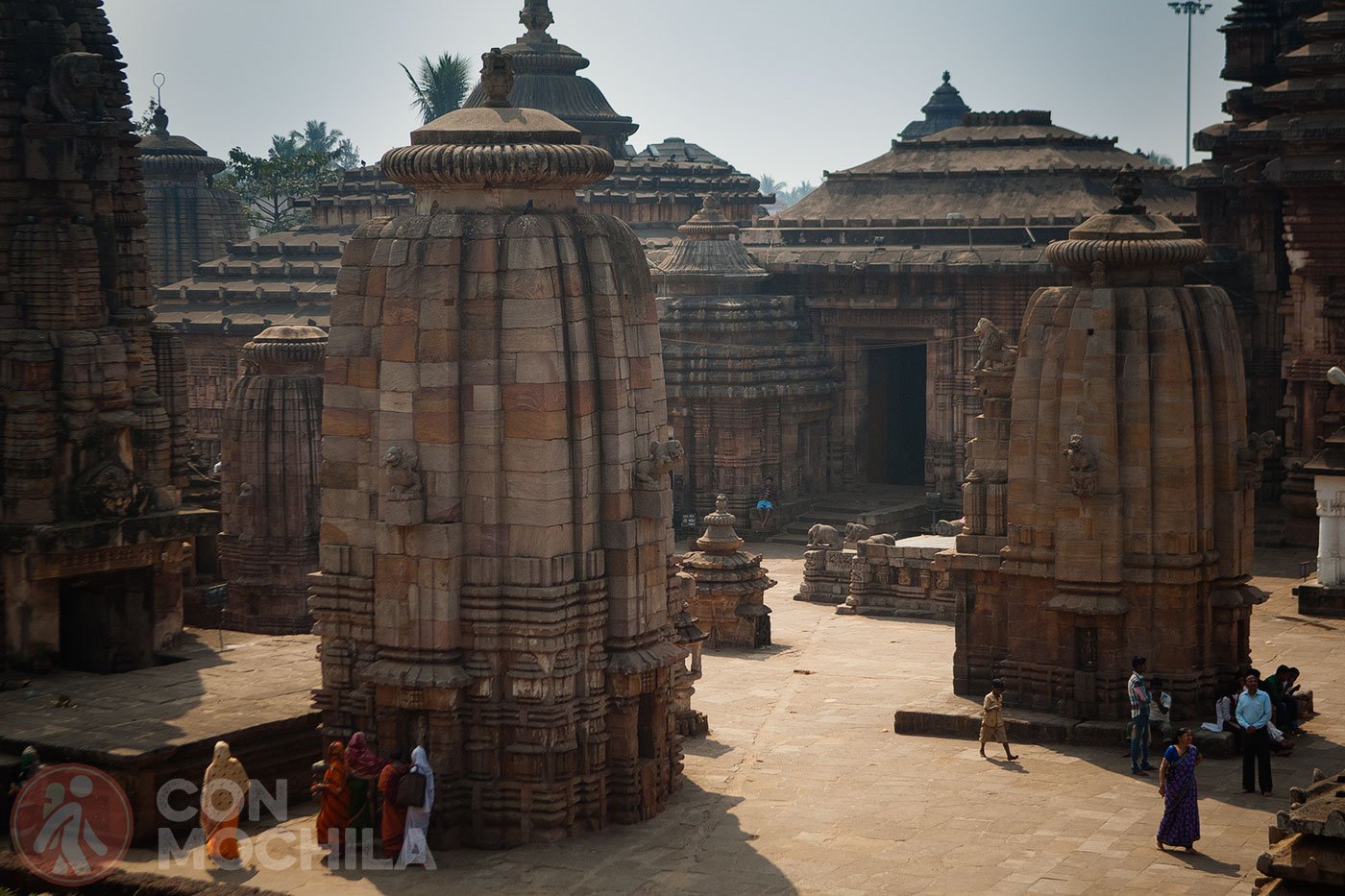
Six kilometers outside the city, there are rock-cut caves called Udayagiri and Khandagiri, believed to have been carved by Jain ascetics. If you spend a couple of days in Bhubaneshwar, you might have time to see a few more temples such as the Mukteswar Mandir or Rajarani Mandir or one of its museums. If you fancy seeing something other than rocks and temples, you can go and see the Bindu Sarovar lake.
For four centuries it was a colony of Portugal and today it is a beach destination with a cultural mix that sets it apart from the rest of the country. Goa, that tiny western state popularized in the 1960s by the hippie community, is a destination for partying and relaxation.
Without leaving aside the cultural part, you can combine your vacation with visits to a church or cathedral, something that will surprise you if you have already spent a few months in the country seeing Hindu temples everywhere.
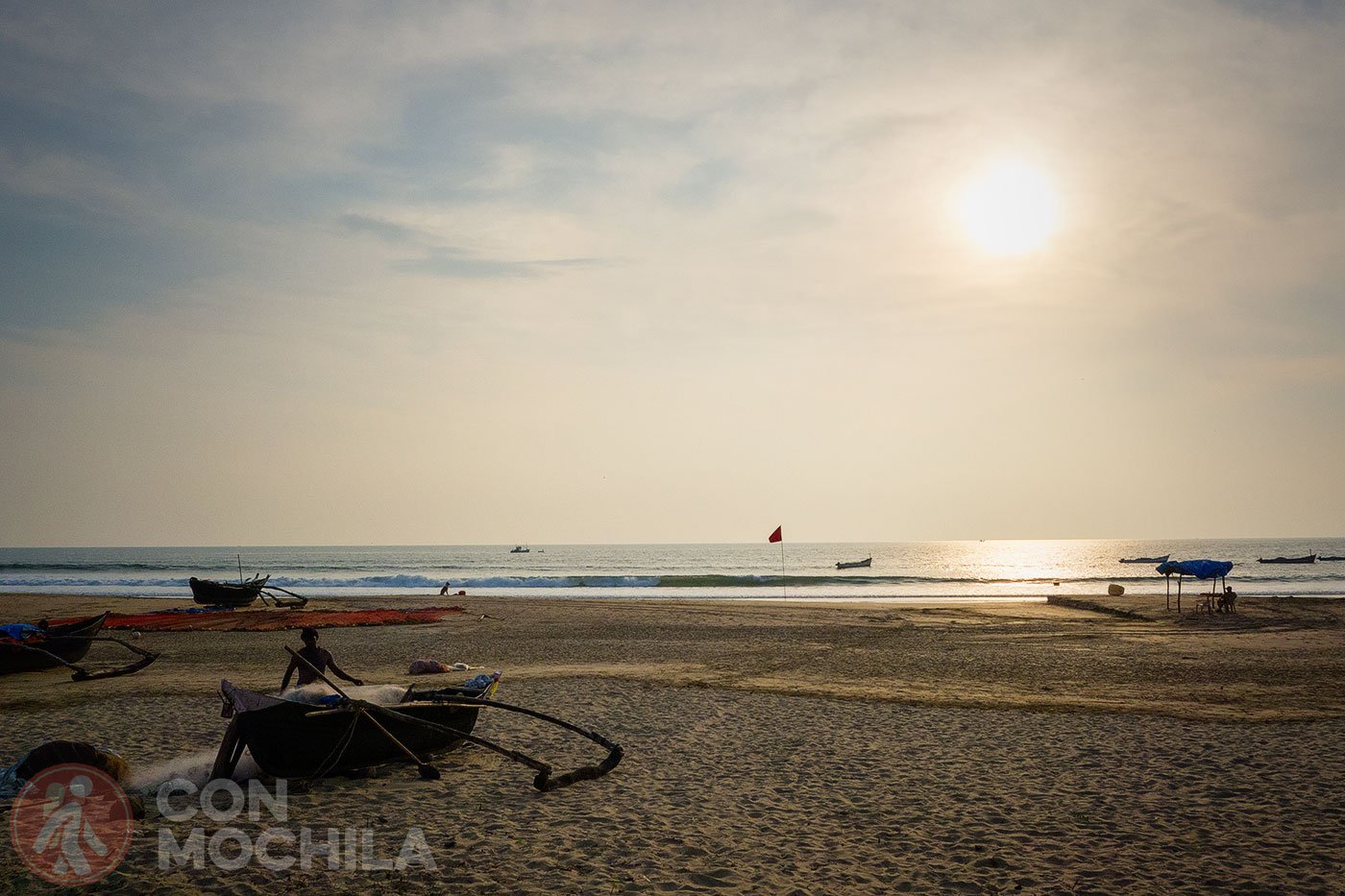
Among its most famous beaches are Arambol, Anjuna and Palolem. How many days in a row can you endure sleeping in hammocks, walking on the sand among dogs and cows, drinking in beach bars, watching fire shows and eating biryani?
The capital of Telangana is called Hyderabad, a mega city where, despite the apparent anarchy, technology is the protagonist, so much so that even large companies such as Google and Facebook have set up offices in the city. On the outskirts there is a technological complex called HITEC City, known as the Silicon Valley of India, and R&D work is carried out inside the building.

But since I imagine you haven’t come here looking for work, you might be more interested in the Old City, where the Mecca Masjid, the Golconda Fort and the Chowmahalla and Falaknuma palaces are located. The Charminar in Hyderabad, built in 1591, is one of the most representative monuments in India, with a style typical of Islamic architecture, made of granite, limestone, mortar and pulverized marble.
Unfortunately, seeing an Asiatic lion in the wild is only possible today in Gujarat, the state that has the “honor” of possessing the last refuge of this majestic animal. The Panthera leo persica, also known as the Indian or Persian lion, is in serious danger of extinction and although in the past it occupied a much larger territory that stretches from the Middle East to India, today it only lives in the Gir National Park and Wildlife Sanctuary forest area.
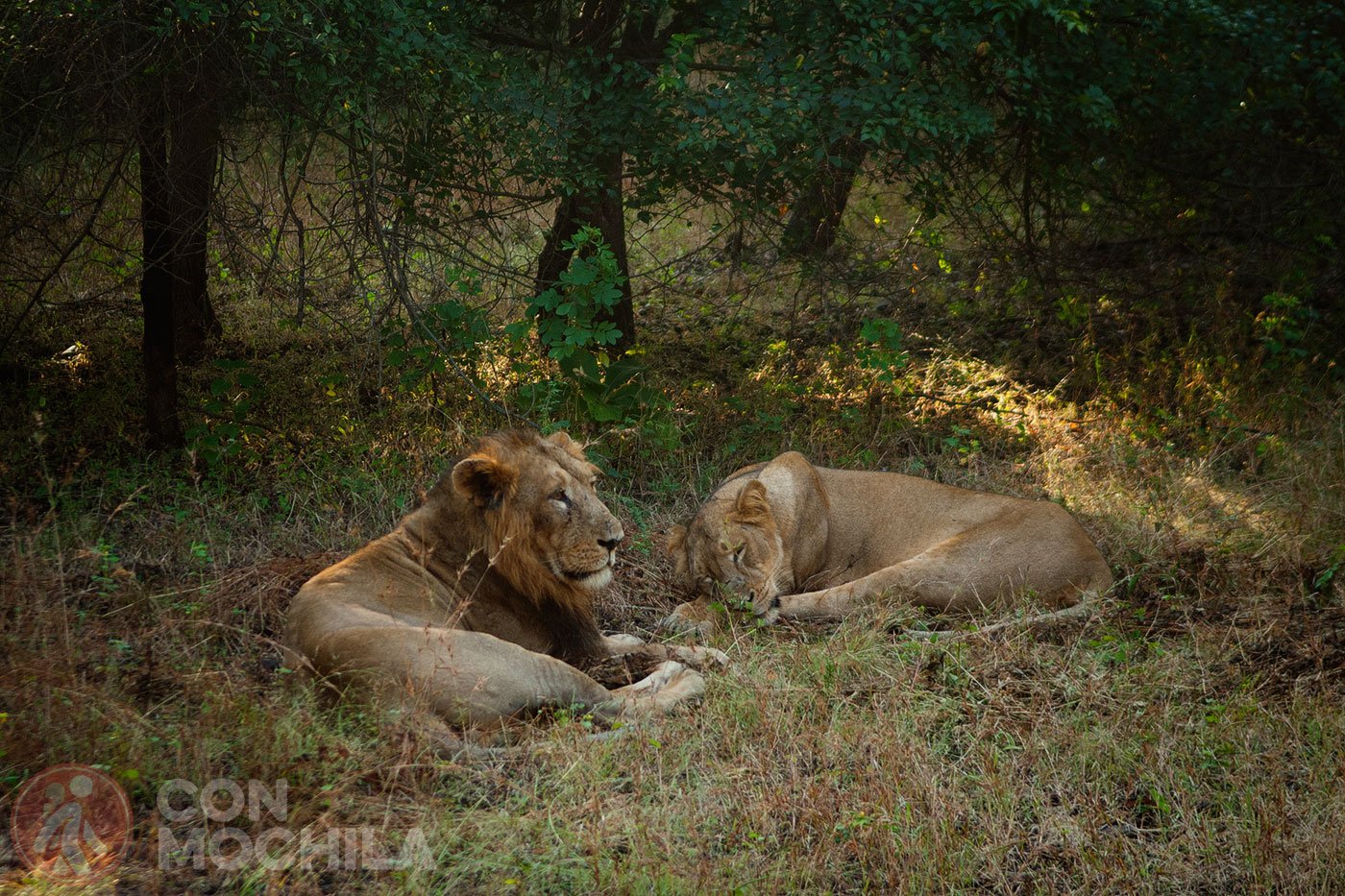
More information on Sasan Gir, home of the Asiatic lion in India, Want to see more images of this “poorly maned” lion? Watch the video SASAN GIR – In search of the Asiatic lion. Nitin family rooms is a good house to stay in the village.
Being in this area of Rajasthan, it was impossible for us not to visit the Ranthambore Reserve, as we knew it was the perfect place to spot tigers, as well as crocodiles, macaques, hyenas, deer, jackals and wild boars, among others. The reserve is located near Sawai Madhopur, 2 hours by train from Jaipur, although we made the trip by local bus, about 5 hours.
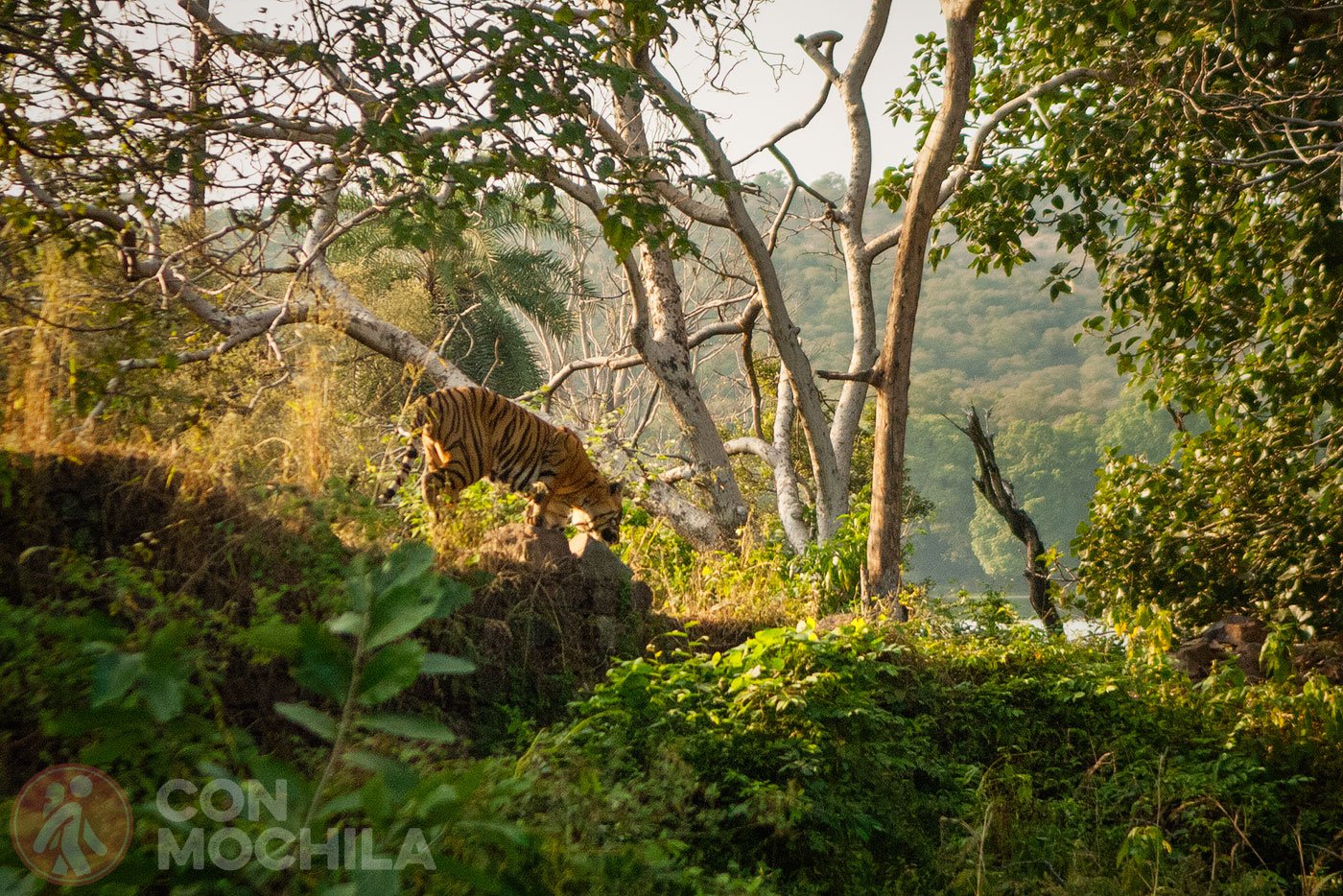
In the previous link (coming soon), find a step by step on how to get easily and cheaply to the Ranthambhore Reserve together with the mandatory documentation. We stayed at Aditya Resort, an austere but practical place.
Our philosophy at the beginning was always “book the first night and then start picking up hotels as you go along”, but since people started traveling en masse, new hotels and new “full” signs have emerged, and with them new booking websites. The advantage is that now you have, just a click away, a lot of hotels and guesthouses to choose from before you arrive at your destination.
We recommend platforms such as Booking.com or Agoda.com, which are very active in countries like India.
In such a large country, the distances between different destinations are almost always long and land transportation is slow, so be patient.
The train is one of the best options despite its delays and crowds; it is very cheap if you travel in a sleeper or unreserved second class and it is also much safer than the road, where many people drive on it bordering on madness. Direct contact for hours with local people turns each carriage into a different chapter of your Indian memories.
There have been various tools available for booking in advance for some time now. We recommend 12go.asia, the website we use to book transportation.
Apart from accommodation, which has seen a rise in price in recent years, the rest of your expenses in India are going to be quite low.
Eating in India is a pleasure for the palate and a relief for your wallet (with the equivalent of one euro you will leave any restaurant with a full stomach). From north to south and from east to west, the cuisine varies and you will never tire of trying new dishes: sauces, breads, rice dishes, thalis…
For 10-20€ you can get double rooms with private bathrooms in almost any destination in India. As for food, you can expect to pay 5-10€ per day per person; add 2-3€ for beer if you are a beer lover.
In many temples or palaces in India you will have to pay an entrance fee and you will have to get used to being charged much more than the locals. Sometimes we pay up to 25 times more, for example the entrance fee to the Taj Mahal, which for Indians costs about 40rs and for a tourist 1000rs!!
Regarding the currency, the Indian rupee (INR) is used in India, the official currency of the country. Regarding ATMs: they charge between 150 and 300 rs commission for withdrawal.
If you prefer, you can exchange currency before traveling with Ria exchange, which offers the best exchange rate on the market. In the previous link you have everything explained in detail.